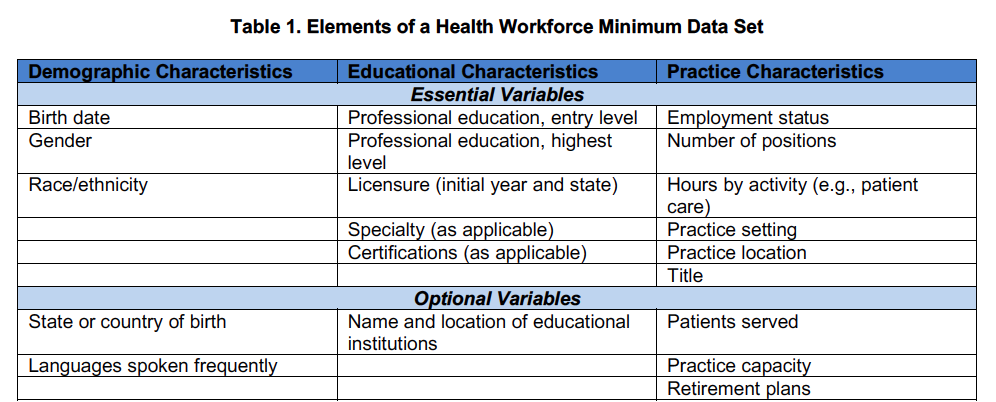Seven million Californians, the majority of them Latino, African American, and Native American, live in areas experiencing shortfalls of primary care, dental care, or mental health care providers. Without accurate, robust and timely health workforce data, the state will be unable to adequately address these challenges. Healthforce’s publication Envisioning an Ideal Health Workforce Data System for California, proposes recommendations to create a system to monitor trends in supply and demand for health care workers and health professions education.
California has a Healthcare Workforce Clearinghouse that was established under legislation enacted in 2007, but the clearinghouse only disseminates information about a limited number of health professions. Even for those health professions for which data are disseminated through the clearinghouse the number of data elements about supply and demand for health professionals is limited and no data are available regarding health professions education.
Creating an ideal data system that goes beyond the existing clearinghouse will require investment of additional resources to expand collection of data to more health occupations and increase the range of products and services available to the state legislature, state government agencies, employers, educational institutions, the media, and other key stakeholders. Legislation may be required to ensure that surveys of licensed and certified health workers are mandatory and that the data collected could be shared within accepted privacy standards. An ideal data system will also require a sustained partnership among licensing boards, state agencies, and universities to expand the amounts and types of health workforce data that are collected, analyzed, and disseminated.
Top Recommendations for California’s Health Workforce Data System
- Capture accurate and robust data on supply of health workers, following the categories and data elements included in HRSA’s Minimum Data Set (Table 1).
- Augment California Employment Development Department (EDD)’s estimates of employment levels and wages with by collecting and disseminating data regarding vacancy and turnover rates.
- Collect educational program data for all health occupations on an annual basis using survey methods similar to those that the California Board of Registered Nursing uses to obtain data on nursing education programs.
- Enhance California’s health workforce data system, which consists of California standardized fact sheets and reports, to encompass tools for querying the data system, visualizing data, and downloading “public use” datasets that can be analyzed by external researchers and stakeholders while meeting basic requirements of confidentiality.
- Create a mechanism for responding to requests for data from the California State Legislature, state agencies, colleges and universities, media outlets, and other interested parties.
- Disseminate information about the data system and its products via webinars, social media, and other means.

Source: Armstrong, D, and Moore, J. The Health Workforce Minimum Data Set (MDS): What You Need to Know. Health Workforce Technical Assistance Center. January 2015. http://www.chwsny.org/wp-content/uploads/2016/06/MDS_Resource_Brief.pdf.
An ideal data system could be housed in the California Department of Consumer Affairs (DCA), the California Office of Statewide Health Planning and Development (OSHPD), or a university-based research center with expertise in the health care workforce. Based on the experience of other states, the most successful model is likely to be a partnership among all three of these entities and other entities that collect health workforce data, such as EDD.
